We’re used to thinking that we provide for butterflies by planting flowers. Yes, the ADULT butterflies needs flowers for nectar, but butterflies also need host plants. So what’s a host plant? The plant butterflies eat in the CATERPILLAR stage. No caterpillars, no butterflies!
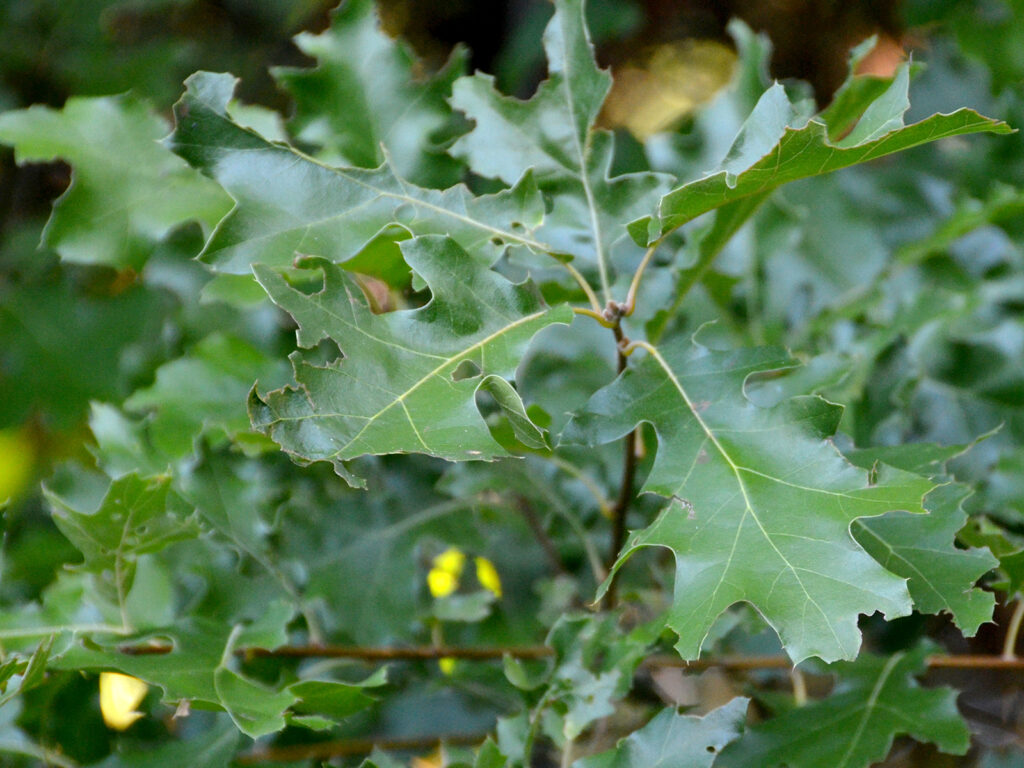
What surprised us most is the number of trees and shrubs that are host plants for various butterflies and moths.
Oaks are super host plants, hosting many insects of all kinds.
For example, this tiger swallowtail adult drinks this joe-pye nectar, but its caterpillars need leaves from trees such as black cherry to eat.
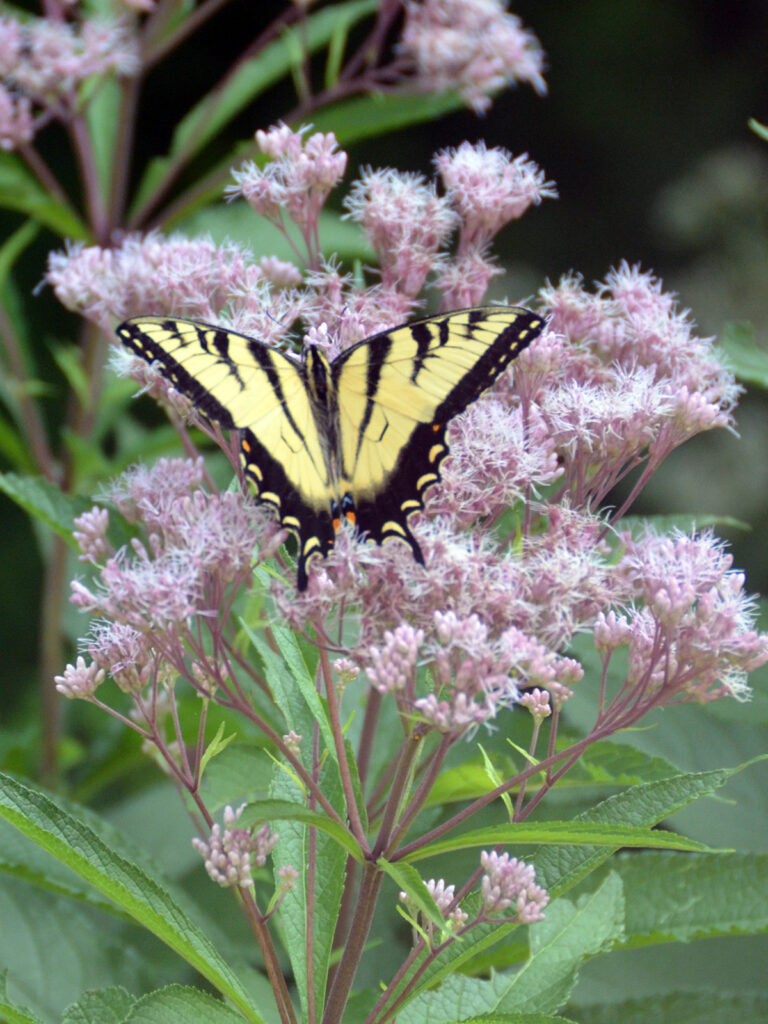
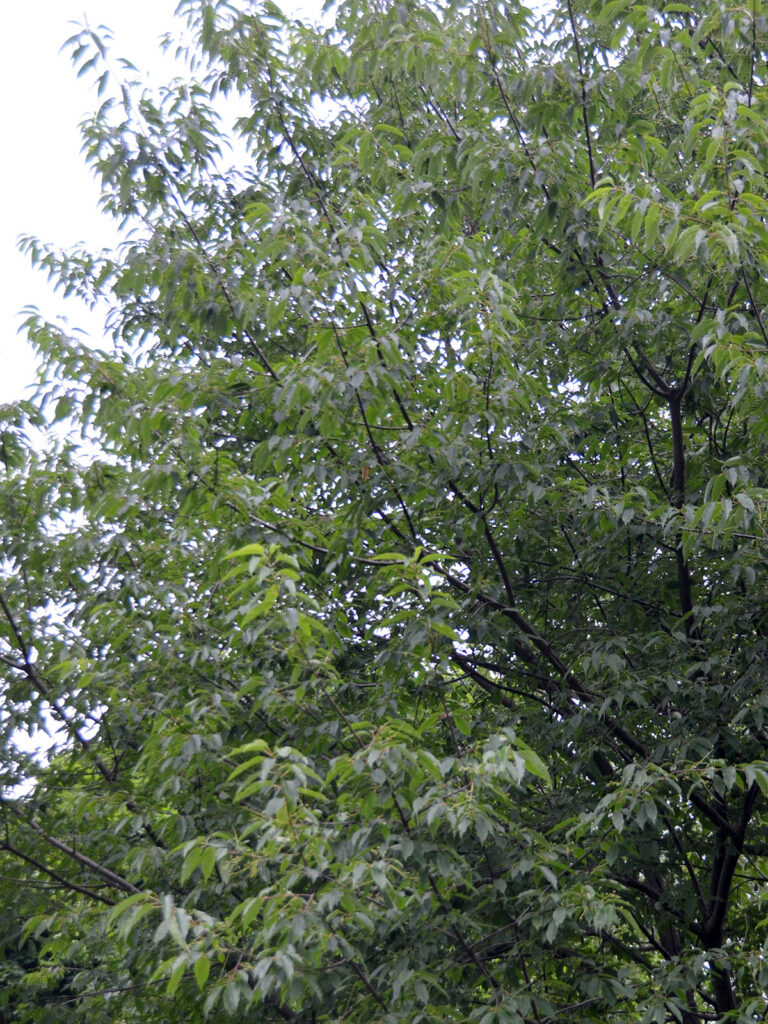
We provide a lot of milkweed for monarchs, but we’re also trying to provide as many host plants for as many other native lepidoptera as possible.
Here are some host plants we grow for butterflies in our area. Not just any plant will do, and what is suitable is different for each species of butterfly. For monarchs, for example, it’s milkweed.
Caterpillars eat leaves!
Yes, they eat the leaves, so if you provide food for butterflies to raise their young, expect some leaves to be in less-than-perfect condition. But this has gone on for millennia, so a few ragged leaves won’t kill the plants. If a butterfly species killed their host plant by eating its leaves, that butterfly species wouldn’t be around very long!
So we’ve changed how we think about leaf damage. Not everyone has.
For example, I came across one website that warned: “Dutchman’s Pipe (Aristolochia durior): Subject to damage from the pipevine swallowtail butterfly, which feeds on and defoliates the plant.”
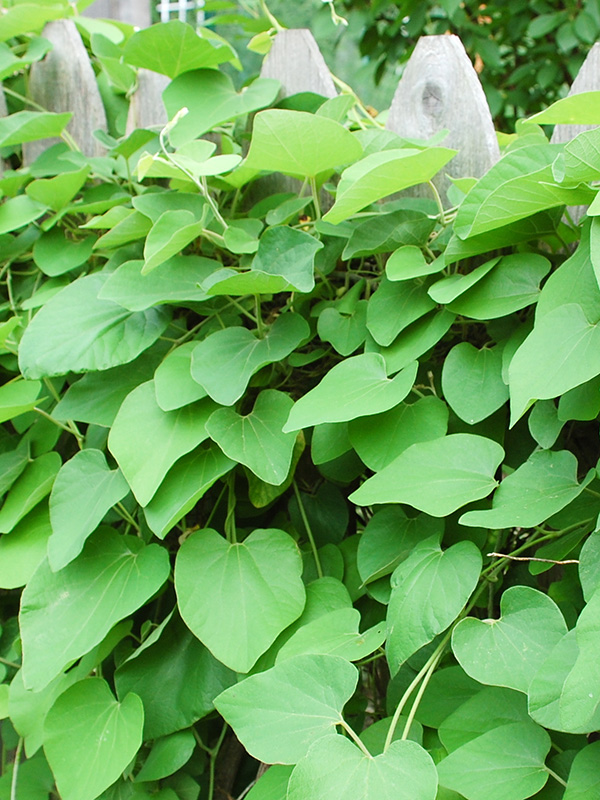
This “damage” is obviously a “problem” we’d love to have! Even though we love plants, it’s hard to understand why people would prefer a perfect plant to a beautiful butterfly. (And it also strikes us as unethical to believe that plants are here merely for the aesthetic pleasure of humans …)
Besides, each caterpillar will eat only a modest number of leaves. The really bad leaf damage you sometimes see is often due to non-native imported insects such as Japanese beetles.
For “normal” leaf damage, try Tallamy’s Ten Step Method. Take ten steps back from the plant and the “problem” disappears!
The typical “solution” to the leaf damage problem is grow non-native plants that have no natural predators in this ecoregion. This is often touted as a benefit of planting these non-native plants. This “benefit” means that the plant is not participating in the life of the ecosystem. Hmmm…. so it might as well be plastic.
Butterflies mating
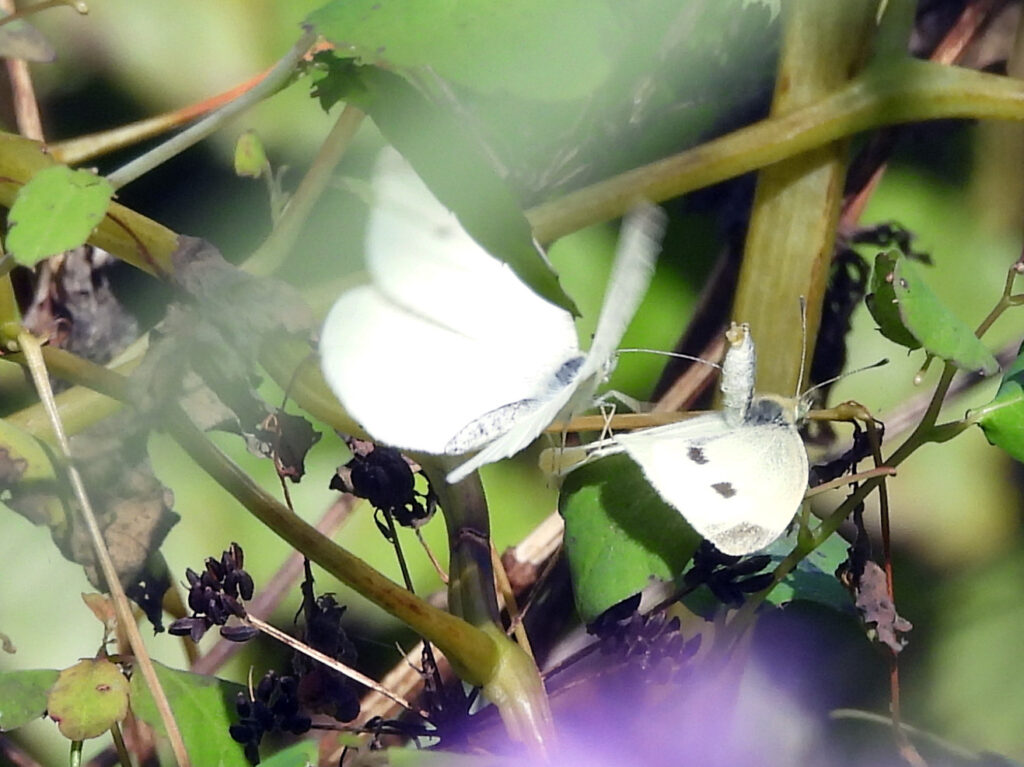
Although the non-native cabbage white moth is a pest of our vegetable garden, it was interesting when I noticed this pair mating. The female is on her back with her abdomen upraised.
Of course, I know what leaves she’ll be laying her eggs on — our kale plants!
Butterflies we raise inside
You can see the different stages of some butterflies we’ve raised: monarchs, black swallowtails, spicebush swallowtails, and American Ladies.
NOTE: I’ve rarely raised monarchs inside since about 2020 when experts suspected that reared monarchs may not survive as well. Since then I’ve only raised a few that I’ve rescued from parking lots or from circumstances when they were unlikely to survive otherwise. (As far as I know, this recommendation against rearing inside doesn’t apply to other locally native butterflies.)
Compared to humans raising their young, butterflies have a much easier job.
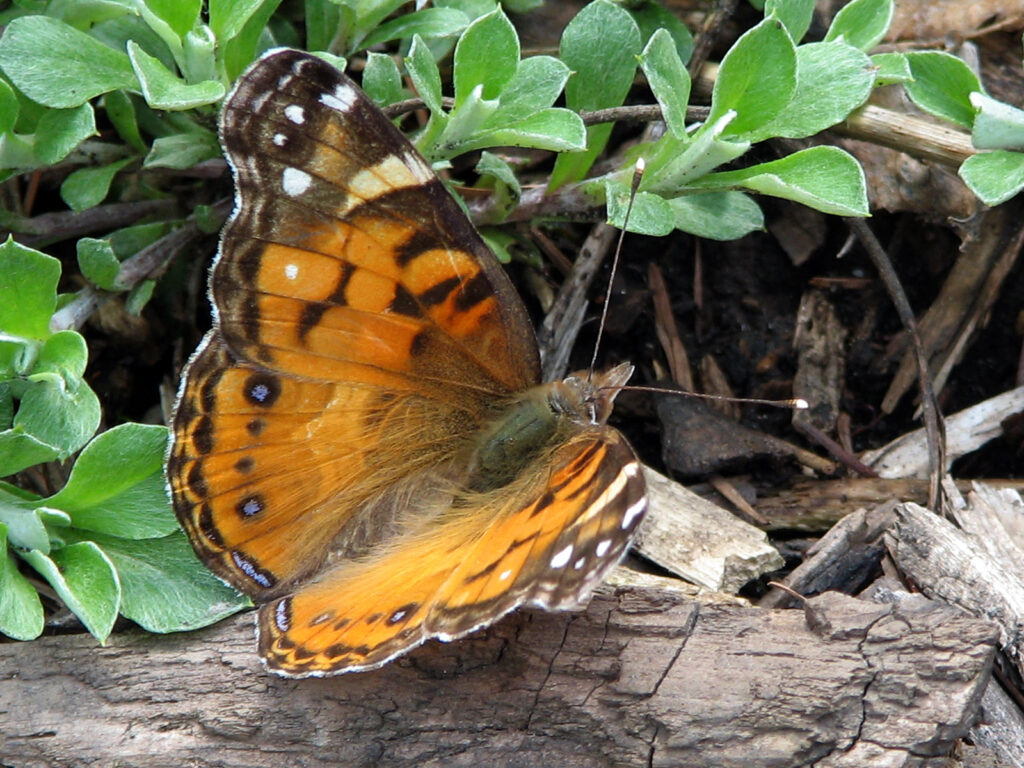
They simply find the kind of plant their future offspring will be able to eat, such as this American Lady butterfly finding pussytoes.
They lay their eggs on those leaves, then go on their merry way.
The future of butterflies and more
Yes, it’s much simpler than raising a human child, but it’s becoming increasingly difficult for butterflies to find that appropriate plant to lay their eggs on. Most yards are filled with non-native ornamental plants that caterpillars can’t eat. We’ve noticed since 2019 or so a big decline in the butterflies visiting our yard to lay eggs, even though we have many host plants which they used reliably every previous year.
Very sad and an ominous sign of a planet that doesn’t support life … not just for butterflies but for future generations of people — in other words, our children and their children.
Resources
- Humane Gardener:
- Raising Butterflies:
- Raising Butterflies is for beginners or advanced butterfly-raisers. It’s a little more focused on the areas west of the Mississippi, but still have a lot of info relevant to us. BUT please don’t raise monarchs inside!
- Missouri Botanical Gardens:
- Butterfly Boutique:
- Raising luna moths:
- AAAS Science Net Links:
- Smithsonian Magazine:
Reflections
The caterpillar does all the work but the butterfly gets all the publicity.
~ George Carlin, comedian
There is nothing in a caterpillar that tells you it’s going to be a butterfly.
~ Richard Buckminster Fuller
